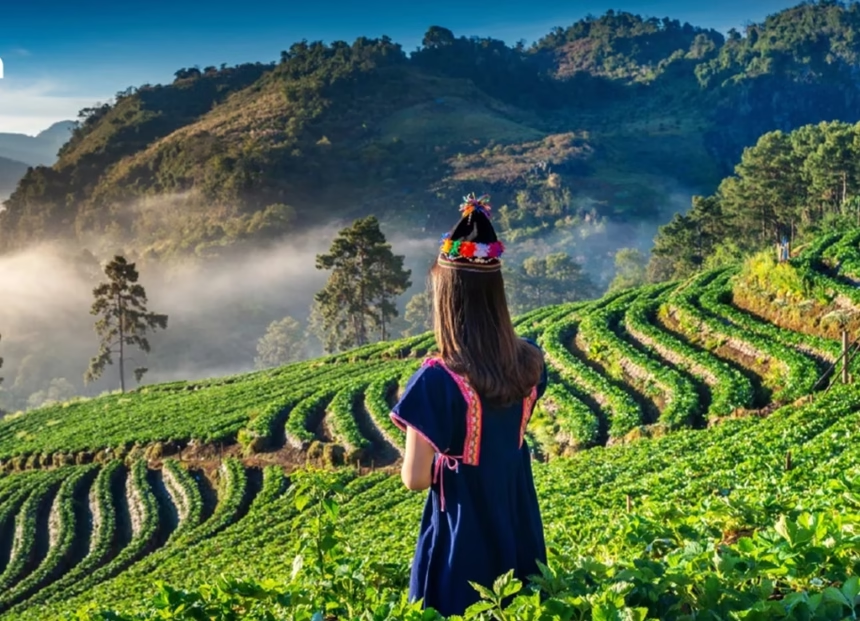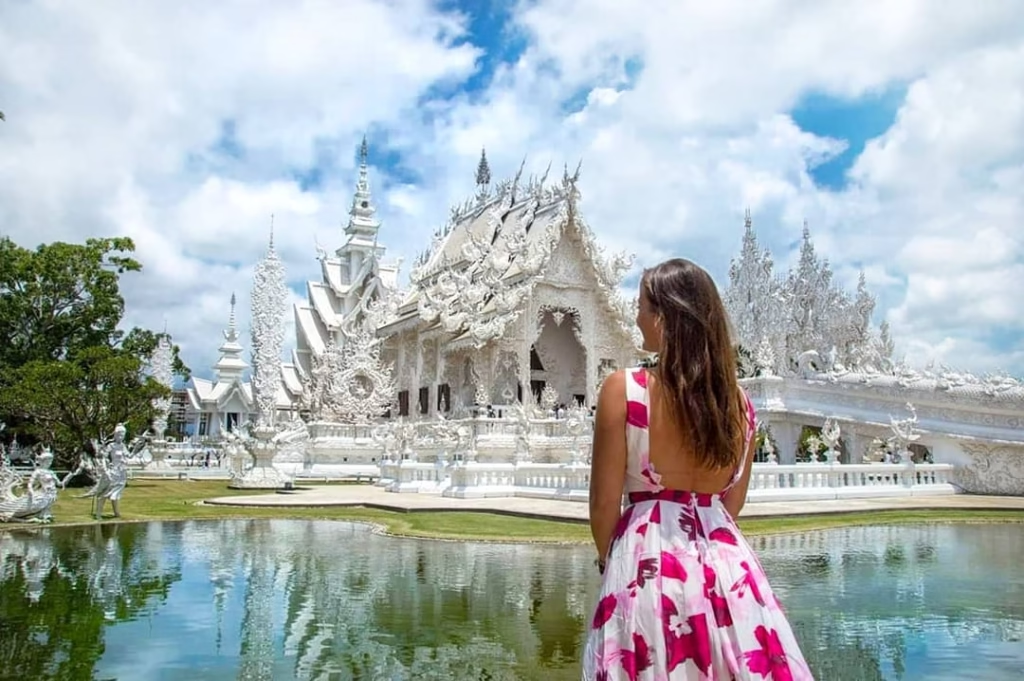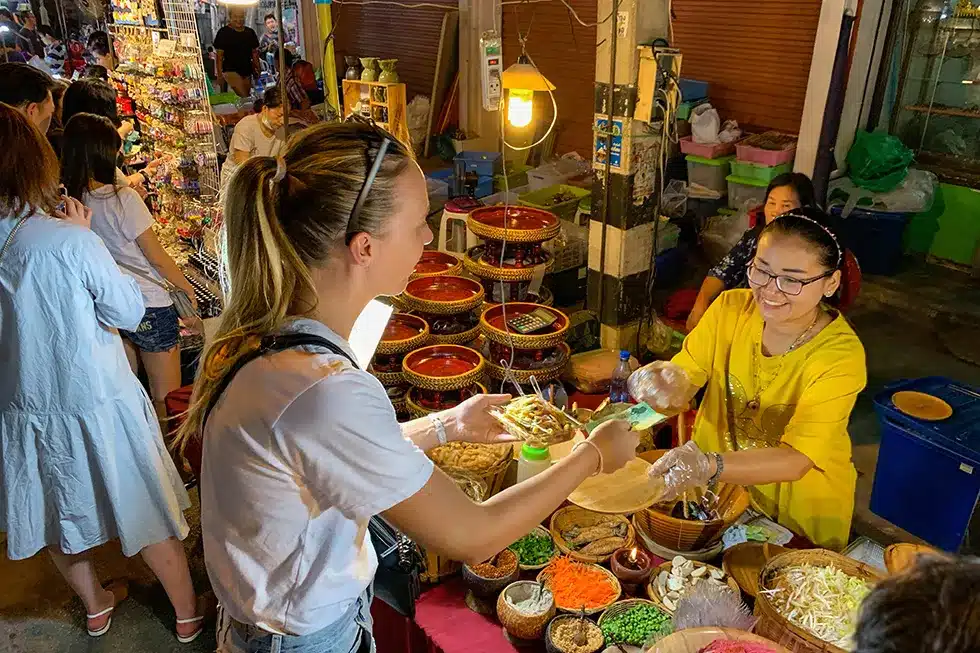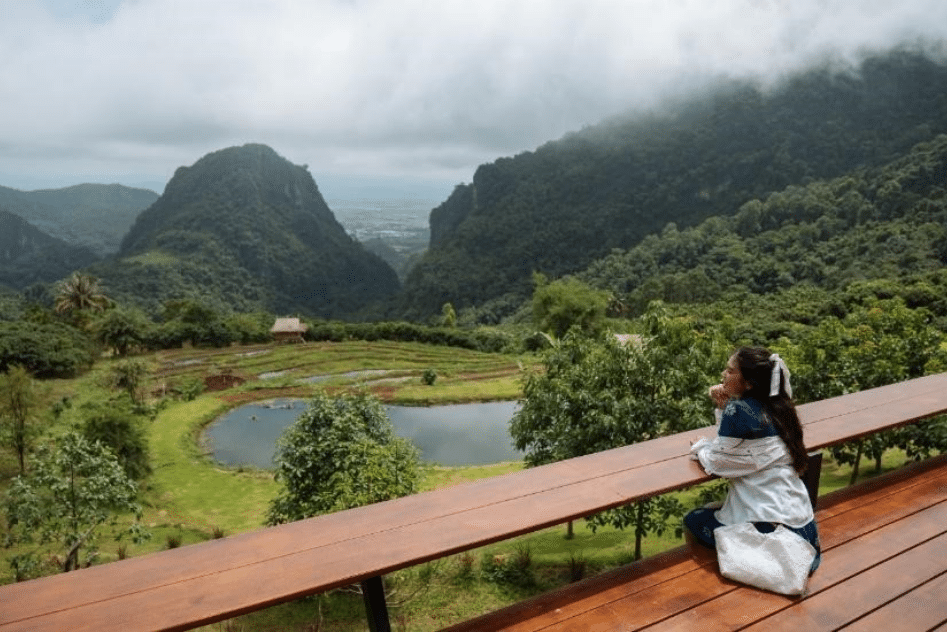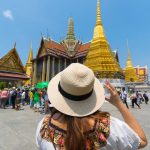Chiang Rai, perched at the northern tip of Thailand, has long sat quietly behind its busier neighbour, Chiang Mai. As 2025 arrives, this peaceful province is stepping into the spotlight in its own gentle way.
Growth here is thoughtful, led by art, deep Lanna traditions, and a strong move towards sustainable tourism. Chiang Rai is no longer just a quick day trip. It now rewards slow travel with bold modern temples, genuine hill tribe encounters, and inspiring eco-friendly places to stay.
This Chiang Rai Travel Guide 2025 from The Chiang Rai Times shows readers how to enjoy the province with care. It helps visitors plan a trip that feels rich and memorable, while also being kind to local communities and the natural environment. It covers standout temples, lively markets, and responsible ways to visit the Golden Triangle. It also shines a light on the new generation of ethical and sustainable stays that are quietly changing hospitality in the Lanna region.
The Artistic Trio: Temples and Art Spaces
Chiang Rai has become a showcase for Northern Thai art, thanks to two National Artists, Chalermchai Kositpipat and Thawan Duchanee. Their signature works, the White Temple and the Black House, sit in stark contrast to one another and create an intense artistic and spiritual conversation that draws visitors from around the world.
Wat Rong Khun (The White Temple): A Shimmering Vision of Enlightenment
Wat Rong Khun, better known as the White Temple, still stands as the city’s main icon. Designed by Chalermchai Kositpipat, it is a contemporary Buddhist temple filled with symbolism. The bright white exterior, set with tiny mirrors, represents the purity of the Buddha. In contrast, the detailed and sometimes unsettling sculptures, including the famous bridge across a sea of grasping hands, highlight the pain of attachment and the cycle of rebirth.
2025 Insight: Construction at Wat Rong Khun moves slowly by design, echoing the artist’s belief that great art is never truly finished. For a calm visit with softer light and fewer crowds, early morning is best, ideally just before the doors open at 8.00 am. In line with Chiang Rai’s green goals, the temple now runs on solar power and has taken a firm stand against single-use plastics on its grounds.
Baan Dam Museum (The Black House): A Study in Darkness and Desire
Baan Dam, or the Black House, sits in sharp contrast to the bright serenity of the White Temple. This was the life’s work of the late Dr Thawan Duchanee. The site holds more than 40 dark Lanna-style buildings filled with art, animal bones, skins, carved wood, and ritual tools. The collection reflects on death, the raw side of human nature, and earthly desires that Buddhism teaches people to rise above. It feels like the earthy counterbalance to the White Temple’s radiant purity.
Wat Rong Suea Ten (The Blue Temple): Bold Colour, Modern Spirit
Wat Rong Suea Ten, the Blue Temple, is a newer yet equally fascinating temple created by a student of Chalermchai. Its vivid blue and gold exterior and striking white Buddha statue inside offer a powerful visual contrast. The design blends classic Lanna features with bright, modern colour and detailed artwork. Located close to the city centre, entry is free. The temple looks especially atmospheric in the evening when the blue tones deepen under the lights.
The Heartbeat of Chiang Rai: Markets and Food Adventures
To feel the real rhythm of Chiang Rai, visitors need to spend time in its markets. These are the places where Lanna cooking, hill tribe crafts, and local routines all come together.
Chiang Rai Night Bazaar: Lively and Visitor-Friendly
A short walk from the famous Clock Tower, the Night Bazaar remains the most popular evening spot in town. In 2025, it keeps its old charm while adding small touches that make it easier to enjoy.
- Eat: Go beyond classic Pad Thai. Try creamy and spicy Khao Soi, a Northern curry noodle soup, and Sai Oua, a fragrant Northern sausage packed with herbs and spices.
- Shop: Browse stalls for hand-woven textiles, silver jewellery, and small wooden pieces made by hill tribe communities. When possible, buy from vendors who clearly work with the artisans themselves.
- Enjoy: The central stage still hosts live music and cultural shows, including Lanna and hill tribe dances. Diners can enjoy these performances with their evening meal, which gives the market a relaxed, friendly feel.
Kad Luang (Chiang Rai Central Market): Everyday Local Life
Kad Luang, or the Big Market, offers a very different experience. This is a working market for locals, not built around tourism. In the morning, it fills with stalls selling fresh vegetables, meat, herbs, snacks, and regional specialties. The air carries the smell of grilled food, fresh chilli, and brewed coffee. It is a great place to observe daily life in Chiang Rai, watch families shop, and see which dishes locals actually eat. Visitors can sip a local-style coffee or try seasonal fruits that rarely appear in supermarkets.
Nature and History: Doi Tung and the Golden Triangle
The countryside around Chiang Rai holds some of Thailand’s most meaningful sites, both in terms of nature and history. In 2025, travel here leans strongly towards slow, respectful experiences that share benefits with local people.
Doi Tung: From Opium Fields to Model Project
The Doi Tung Development Project, founded by the late Princess Mother, is recognised as a leading example of long-term sustainable development. The area once relied heavily on opium crops. Today, it has become a centre for responsible farming, conservation, and community income.
What to See:
- The Royal Villa: The wooden and stone home of the Princess Mother, now a museum, explains how the project began and what has changed for local people.
- Mae Fah Luang Garden: A beautifully kept flower garden with cool-climate plants. It shows how the hills have been reforested and how new crops have replaced opium.
- Doi Tung Tree Top Walk: A canopy walk through the treetops with sweeping views over the hills, ideal for those who enjoy gentle adventure and fresh mountain air.
Sustainable Impact: Entry fees and spending at Doi Tung help support hill tribe communities that have shifted from opium to coffee, macadamia nuts, flowers, and hand-made products. Visitors, by choosing this area, support long-term local incomes and forest recovery.
The Golden Triangle: From Opium Crossroads to Learning Centre
The Golden Triangle is the point where Thailand, Laos, and Myanmar meet along the Mekong and Ruak rivers. In the past, this area was linked with the opium trade. Today, it has changed into a place of reflection and learning.
Responsible Experiences:
- Hall of Opium: This museum tells the story of opium in clear, honest detail. Exhibits explain how the trade grew, who it affected, and how it was reduced. For travellers interested in history, it adds depth to any visit to the area.
- Ethical Boat Trips: Short long-tail boat rides on the Mekong are still available. Booking with licensed local operators supports fair work practices. These rides help visitors understand the geography of the three countries and offer a different perspective on the river communities.
Staying Green: Eco Hotels and Ethical Activities
One of the most positive changes in Chiang Rai tourism in 2025 is the rise of eco-friendly places to stay and low-impact activities. Many businesses in the region now follow the idea of “Green Lanna”, which focuses on thoughtful travel that supports people and nature.
Picking an Eco-Friendly Stay
Modern travellers look for places that care about the environment and their staff. Chiang Rai’s hotels and lodges have started to respond in creative and practical ways.
- Eco-Resorts and Retreats: Along the Kok River and in the hills around Mae Salong, small resorts and luxury tents now offer quieter stays. Many invest in biogas systems, use solar power, and hire staff from nearby villages. Some work with local farmers and buy food directly from them.
- Hill Tribe Homestays: Homestays in Akha, Lahu, or Lisu villages offer simple, warm hospitality. Most keep guest numbers low, often under 20 guests each night, to reduce pressure on water and land. Visitors might learn to cook local dishes, weave, roast coffee, or join tree planting and water projects. A large share of income often goes into schooling, medical care, or village projects. The goal is shared daily life, not staged shows.
Ethical Encounters with Elephants
Chiang Rai has moved away from old-style elephant tourism and now stands as one of the better examples of animal-friendly travel in Thailand.
- Sanctuaries Instead of Shows: Traditional elephant camps with rides and tricks have mostly closed or changed their model. In their place are sanctuaries that put the elephants first. Guests may prepare food, walk beside the herd, or watch them bathe, but they do not ride or force them to perform.
- Why It Matters: Entrance fees help pay for food, land, and medical care. Before booking, travellers should always check reviews and read each sanctuary’s policies. True sanctuaries focus on space, freedom of movement, and calm daily routines for the elephants.
Agro-Tourism and Farm-to-Table Experiences
Chiang Rai’s rich soil and cool hills make it ideal for organic farming. More farms are now opening their gates to visitors who want to understand where their food comes from.
- Organic Farms: Around Mae Chan and in nearby valleys, visitors can join in with seasonal work, such as picking coffee cherries, planting rice, or harvesting mulberries for tea. These hands-on stays often include simple meals cooked from the farm’s own produce.
- Agroforestry and Reforestation: Some projects combine older hill tribe farming knowledge with modern ideas like permaculture. They hold short workshops on natural building, soil care, and tree planting. Many travellers choose to plant trees during their visit as a small way to balance some of their travel emissions.
Planning a Chiang Rai Trip in 2025: Practical Tips for Mindful Travel
Best Time to Visit: The cool season from November to February remains the most comfortable. Days are clear and dry, ideal for temple visits and mountain viewpoints. The hot season, March to May, can feel intense in the afternoon, although mornings and evenings stay pleasant. The rainy months, June to October, bring lush rice fields, waterfalls at their strongest, and fewer tourists.
Getting Around:
- In the City: Central Chiang Rai is compact. Walking and cycling are easy choices for visiting the Clock Tower, main temples, and the Night Bazaar.
- Exploring the Countryside: For trips to Doi Chang, Mae Salong, and other hill areas, hiring a car or scooter offers freedom to stop at small villages and viewpoints. E-bike rentals are becoming more common and suit travellers who want to stay low-carbon while exploring backroads.
- Arriving in Chiang Rai: Flights from Bangkok remain the fastest option, but for lower-impact travel, the Eco Sleeper train from Bangkok is gaining fans. It combines overnight travel with organic meals and natural materials such as bamboo bedding.
Cultural Respect:
- Dress Code at Temples: Shoulders, chest, and knees should be covered inside temple grounds. Sarongs and light shirts work well in the heat. Shoes must come off before entering the main prayer halls.
- Support Local Businesses: Favour family-run shops, community markets, and village co-operatives. Buying directly from makers helps money stay in the community and supports traditional skills.
- Respectful Visits to Villages: Hill tribe villages are homes, not attractions. Always ask permission before taking photos of people, especially children and elders. Speak gently, follow local customs, and avoid handing sweets or money to children directly.
Chiang Rai in 2025 stands as a calm yet confident example of responsible tourism in Southeast Asia. From gleaming modern temples to the storied banks of the Golden Triangle, the province offers depth, beauty, and warmth. Underneath it all lies a steady push towards sustainability, fair income, and healthy forests. Visitors come for the art and scenery, stay for the culture and food, and leave with a sense that their time in Lanna has supported both people and place.




